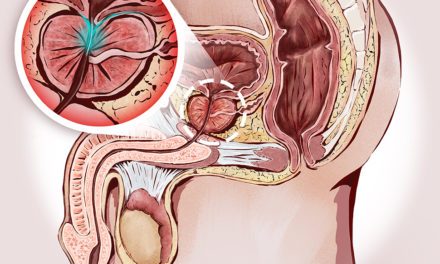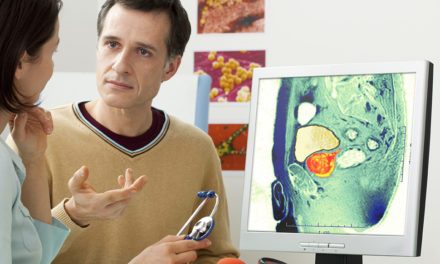
Male Sexual Dysfunction: A Case Study on Inhibited Ejaculation. An Integrated Approach to Healing Using Western Anatomy and Traditional Chinese Medicine
Dr Sharyn Allyson LAc DAOM
ABSTRACT
Inhibited ejaculation is a less talked about however very distressing sexual dysfunction among men and women. The frustration and relationship impact significantly impairs quality of life. Traditional Chinese medicine (TCM) offers treatment modalities to manage this concern on a full body approach addressing associated signs and symptoms that maybe overlooked by a Western approach that often do not provide total relief and are associated with side effects. This case report illustrates a 10-week course of acupuncture and Chinese herbs for a 58-year-old male experiencing difficulty with ejaculation. The outcome suggests that TCM may provide a significant improvement in the chief complain as well as associated symptoms that TCM finds necessary to address along with the ejaculation concerns.
INTRODUCTION
During a research combining 23 studies which assessed the incidence and prevalence of sexual dysfunctions samples indicated a current prevalence of 5–10% for inhibited female orgasm and 4–10% for inhibited male orgasm. (Ilana P. 1990) Clinically, inhibited ejaculation is the least common sexual disorder, Masters and Johnson reported only 3.8 percent in one group of 447 sex-dysfunction cases (Sadock & Sadock, 2006) however most often presents as a primary disorder (Mulcahy, 2006). The main complaint being that orgasm occurs readily with masturbation however not with intercourse. Due to the complexity of biological and psychological events taking place during the orgasm/ejaculatory phase it is necessary to determine where within the sequence of reflexes the discord presents. Western medical research and biological findings presents the ability to determine the etiology and TCM provides a useful modality to address the underlying causes.
WESTERN MEDICAL INTERPRETATION
Male sexual function is the extraordinary, intricate coordination or physiological and biological events that enable the repeatable occurrence of male arousal, erection, orgasm, and detumescence. In order to achieve total sexual response synchrony of anatomical, vascular, neurologic, psychological, endocrine and systemic factors must fall into place. Any disruption of this sequence can result in varying sexual dysfunction results.
“Inhibited ejaculation/orgasmia is defined by the Diagnostic and Statistical Manual of Mental Disorders as the persistent or recurrent difficulty, delay in, or absence of obtaining orgasm following sufficient sexual stimulation, which causes personal distress.” (Mulcahy, 2006)
Inhibited Ejaculation can be sub-catoragized as life long or acquired and global or situational. If orgasm can never be achieved this is referred to as anorgasmia and etiologies can be neurogenic, metabolic, or adverse drug effects. If orgasm can be achieved sometimes, it is referred to as inhibited ejaculation or delayed ejaculation/orgasm. In this condition there maybe nocturnal or masturbation emissions. If there is always orgasm and no ejaculate this is referred to as retrograde ejaculation or anejaculation. In this case and sperm is found in the urine this determines retrograde ejaculation. If no sperm is present there may be an ejaculatory duct obstruction and this condition is termed aspermia. (Carson, 2009)
Etiologies for Inhibited Ejaculation may be from insufficient stimulation by the pudendal nerve on either a physical or emotional level. Nerve damage caused by excessive and strong masturbation may cause loss in fast conducting peripheral sensory axons along with an inability to reach ejaculatory threshold with age related hypo-anesthsia. Diabetes and heart disease may also cause demyelination of the pudendal nerve causing neuropathy. (Mulcahy, 2006). Surgery or trauma to the pudendal nerve or sacral plexes may have lasting effects on the sensitivity of the nerve. (Sadock & Sadock, 2000)
Serotonergic receptors found in the grey matter of the spinal cord that innervate the pudendal motor neurons may be effected with high levels of serotonin and inhibit the ejaculatory reflex arc. With a decrease in orgasmic contractions there is a decrease in dopamine that reinforces a person’s desire to experience pleasure. (Mulcahy, 2006) Serotonin levels may be increased with the intake of selective serotonin re-uptake inhibitors (SSRI), hypertensives and phenothiazines. Alcohol and hyper-glycemia may also induce transient inhibited ejaculation. ( Sadock & Sadock, 2000)
Inhibited ejaculation induced by organic factors refers to a more psychological cause of the condition and triggered by thoughts of unwanted pregnancy, loss of sexual attraction, past sexual trauma or unexpressed hostility towards women or partner. (Sadock & Sadock, 2000)
ACUPUNCTURE AND ORIENTAL MEDICINE
Unlike some Western medicine views, the Taoist incorporate the possibility of orgasm without ejaculation and view the two aspect of experiencing sex completely separate. Sexual essence or Jing is a powerful, vital energy that is continuously generated within the human body. Taoist sexual practice permits men to retain certain bodily secretions that are a source of energy when stored and re-circulated to higher vital centers. This prevents loss of this biochemical energy by not ejaculating (Chia, 1984)
Maciocia (1905) discusses that kidney essence or Jing provides the sexual essences of both men and women and describes sexual activity as ejaculation in men and orgasm in women. Sexual activities resulting in ejaculation are thought to be depleting to the kidney essence. Disease may be a result of the excessive loss of this essence. Excessive sexual activity is said to depend on the individual constitution, age and health, and to be practiced according to the seasons, increasing in spring and summer and declining in autumn and winter.
Lin (1997) discusses that rather than treating the urological disease in TCM it is necessary to determine a pattern differentiation. Causes of sexual dysfunction are due to the indulgence of the seven passions being joy, anger, worry, melancholy, grief, fear and fright. With each emotion having its own action and damaging the heart, liver, spleen, lungs and kidney respectively. The six evils of wind, cold, summer heat, dampness, dryness, and fire affect the urogenital region. Cold, dampness and heat being the most prevalent. Trauma may damage the chong, ren, du and dai vessels effecting the jing and blood while lifestyle including over eating and drinking along with certain food types may injure the spleen. She states from the Su Wen that excessive lying staring, standing, and walking can injure the qi, flesh, blood, bones respectively. Congenital insufficiency may be due to wu bu nan or “five not men” tian – lack of testes, lou – habitual emission, jian – malformation of genitalia, qie – impotence or bian – hermaphrodism.
Bu She Jing failure to ejaculate can be divided into two groups “1) evil repletion obstructing the palace of jing 2) weakness of the righteous qi not allowing for the opening of the palace of jing” Lin (1997)
Lin list ten TCM pattern differentiations, “Liver depression qi stagnation, liver depression kidney vacuity, liver gallbladder damp heat, liver depression/spleen vacuity, kidney spleen dual vacuity with accumulation of dampness, kidney yin vacuity, kidney yin vacuity with reckless stirring of ministerial fire, kidney vacuity jing portal closed shut, qi stagnation blood stasis, phlegm turbidity obstructing the jing.” Lin (1997)
CASE HISTORY
58 year-old male presents with concerns of inability to ejaculate with unknown biomedical diagnosis. The patient had recently started a new relationship and although can ejaculate through masturbation with perceived normal stimulation he could not achieve desired outcome with partner stimulation. This condition was not specific to the partner he was seeing during the treatments and had previously experienced similar concerns in relationships for over 15 years. He reports having moderate libido and normal erectile response with no numbness or tingling in the genital area however slight dribbling after urination. He reported constant thinking about the condition and wanting to please his partner.
On the initial visit elbow pain was indicated as the chief complaint however after explanation of specialization in men’s health, inhibited ejaculation became the chief complaint in the subsequent nine visits. The patient had not been assessed by a medical doctor and etiology was unknown. He was not taking biomedical drugs specifically for this condition however taking simvastatin for cholesterol. The patient was hesitant and not sure how much to say during the treatment intake until prompted by specific questions.
Temperature was reported normal throughout the ten treatments however he had cold hands and feet. He was experiencing jaw clenching during the day and sleep had been disturbed with the excitement of a new relationship with fatigue with ruminating thoughts about his concern. There were no other abnormal findings reported other than elbow pain due to a racquet ball game.
Tongue appeared puffy and pale with moist greasy coat or foamy coat. Pulse was sometimes wiry then sometimes soft and soggy
Assessment: The TCM diagnosis is inhibited ejaculation with the pattern differentiation of liver qi stagnation, spleen qi deficiency and phlegm accumulation obstructing channels. Indications of liver qi stagnation were situational inhibited ejaculation with partner only hence an emotional component to the symptoms, jaw clenching and extended time taken for ejaculation to occur and wiry pulse. Spleen qi deficiency indicators were, slightly overweight, constant thinking and performance anxiety, dribbling of urine, puffy pale tongue and phlegm accumulation obstructing channels is indicated with greasy tongue coat, overweight and that the liver channel surrounding the genital area is effected.
Treatment Principles: Correct the smooth flow of qi, tonify spleen qi and transform phlegm, open channels and collaterals.
Treatment: The patient received 10 treatments over a 10-week period. The patient lay prone and the following acupuncture points listed in table 1 were selected. The needles were inserted to a depth where deqi sensation was felt. A Pantheon Research 8c.Pro electro-stimulator machine with cords attached to milliampere connecting Panguanshu BL-28 and Zhonglushu BL-29 bi-laterally and set to a frequency of 100/4 mixed setting for 20 minutes. All acupuncture procedures were performed with sterile disposable needles: 0.25x30mm Spring Singles, DBC brand, Korea
Outcome
Following a schedule of acupuncture once a week for 10 weeks the patient reported gradual improvement with a sense of feeling more calm and relaxed with improved ability to ejaculate with his partner. Most improvements was reported after week 6 coinciding with information presented to him about how TCM views sexual activity and the loss of essence through ejaculation and the importance of cultivating sexual energy. It is not clear if this new information had expedited the desired results. Due to the sensitive nature of the concern specific details on the time taken to ejaculate were withheld however the patient reported a 50% decrease in time taken to reach climax relieving some performance and relationship anxiety. He also reported improved sleep and less stress in work life. On week 8 he reported that dribbling after urination had decreased slightly. He reported feeling a more everyday sense of wellbeing and more relaxed within his relationships. Patient appeared calm and excited about the outcome during the final treatment and was not as restless while being treated. Prognosis for this patient is good if regular treatments are continued.
Discussion
This case report presents an insight into the different philosophies that Western Medicine and TCM have on the actual act of ejaculation. Even though TCM has a view that excessive sexual activity may deplete Jing energy, the stress accumulated by the patient under a western thought process of this concern may create further depletion and hinder the desired outcome by creating stagnation in the liver. In TCM the liver controls the coursing of qi and the sinews providing the free flow of unobstructed jing. Lin (1997). The liver channel travels up the medial leg and wraps around the genital region therefore can have a direct impact on the ejaculation process. When educated on the possibility that orgasm may be achieved without the ejaculation reflex the patient felt a change in his ruminating thought patterns and opened to other ways of experiencing his sexual energy and in turn resulted in achieving the desired outcome.
As TCM has the ability to treat more than one pattern differentiation at a time, it was possible to combine TCM theory and stimulation at western anatomical nerve root locations. As the symptoms indicated emotional involvement and stress relating to the symptoms, the stimulation of Taichong LV-3 to correct the smooth flow of qi along with utilizing its actions of regulating the genito-urinary system appeared to have helped in this case. It is also possible the information on alternative sexual experiences created hope and an openness to allow a smooth flow of qi. Panguanshu BL-28 back shu of the bladder with its action of regulating the bladder and located at the second sacral foramen (Kandeel 2007) along with Zhonglushu BL-29 at the third sacral foramen where the pudendal nerve exits the spinal cord (Kandeel 2007) covers the ability to address both the bladder and ejaculation concerns. It may be that Zhonglushu BL-29 could have the action of regulating ejaculation reflex and bladder regulation had the Chinese text been written at a time with the Western knowledge that the pudendal nerve innovates here and controls bladder and ejaculation functions.
Conclusion
In summary, the patient experienced improvement and a sustained response to TCM in managing a distressing symptom of inhibited ejaculation that western medicine may have prescribed drugs or ongoing psychotherapy. By bringing a general overall calmness and a sense of wellbeing to the patient along with sensation to the pudendal nerve that stimulate the ejaculation reflex response using TCM and acupuncture, the patient has experienced considerable personal and relationship improvement and a higher quality of life.
References
Carson, C.C., Kirby, R. S., Goldstein, I., Willie, M. G. (Eds.). (2009). Textbook of erectile dysfunction. New York: Informa Healthcare.
Chia, M., & Winn, M. (1984). Taoist secrets of love: Cultivating male sexual energy. Santa Fe NM: Aurora Press
Deadman, P., Mazin, A., & Baker. (2007). A manual of acupuncture. Hove: Sung In Printing America, Inc
Ilana, P., (1990). Incidence and prevalence of the sexual dysfunctions: A critical review of the empirical literature. Archives of Sexual Behaviour, volume 19 (number 4). Retrieved from http://www.springerlink.com/content/?Author=Ilana+P.
Kandeel, F. R. (Ed.) (2007). Male sexual dysfunction: Pathophysiology and treatment. New York: Informa Healthcare.
Kaplan, H. I. (2000). Comprehensive textbook of psychiatry. Sadock, B. J., & Sadock, V. A., ( Eds.). New York; Lippincott Williams & Wilkins
Lin, A. (1905). A handbook of TCM urology and male sexual dysfunction. USA: Blue Poppy Press, Inc.
Maciocia, G. (1997). The foundations of Chinese medicine: A comprehensive text for acupuncturists and herbalists. England: Churchill Livingstone.
Mulcahy, J. J. (2006). Male sexual function: A guide to clinical management. Totowa New Jersey: Human Press







